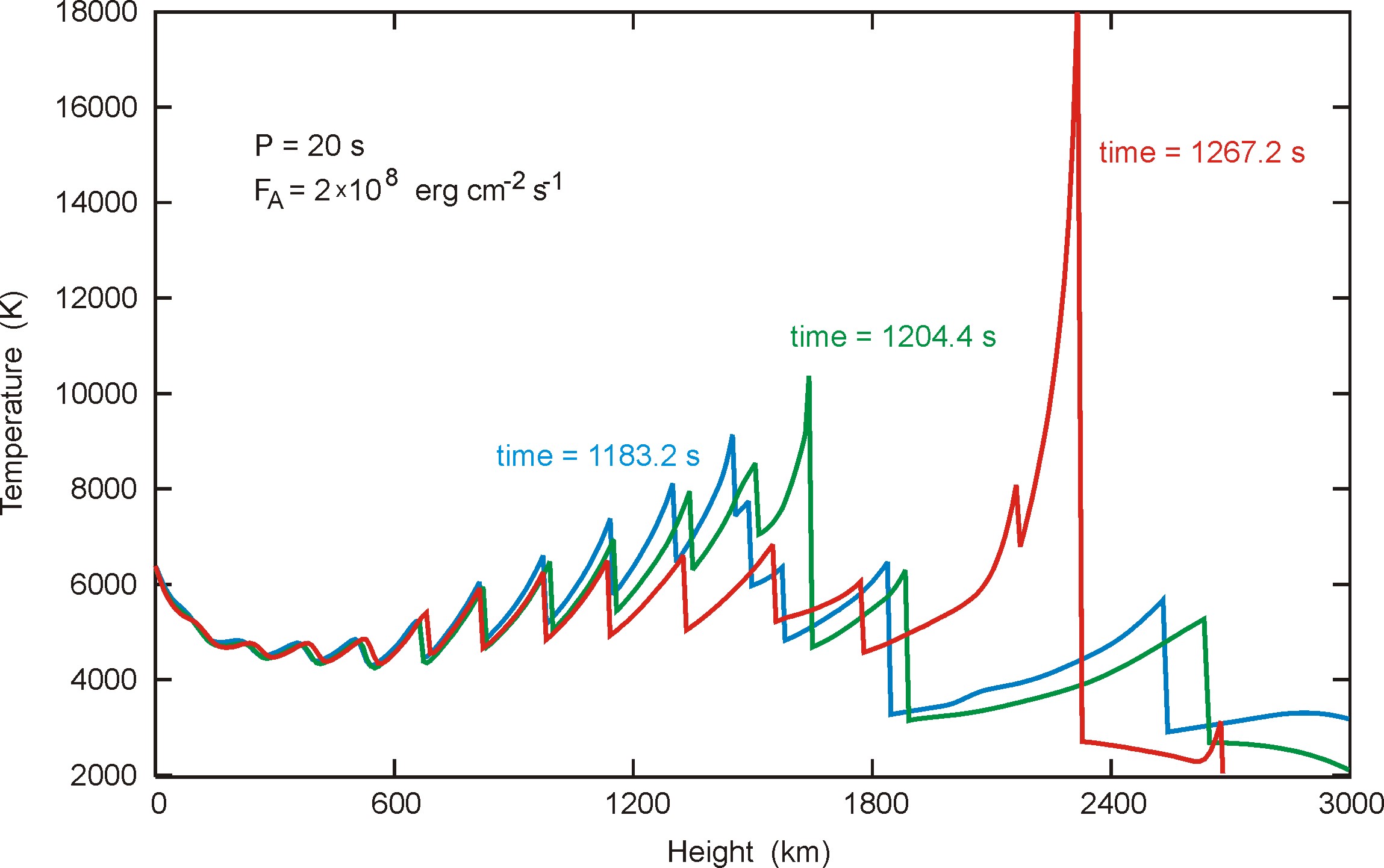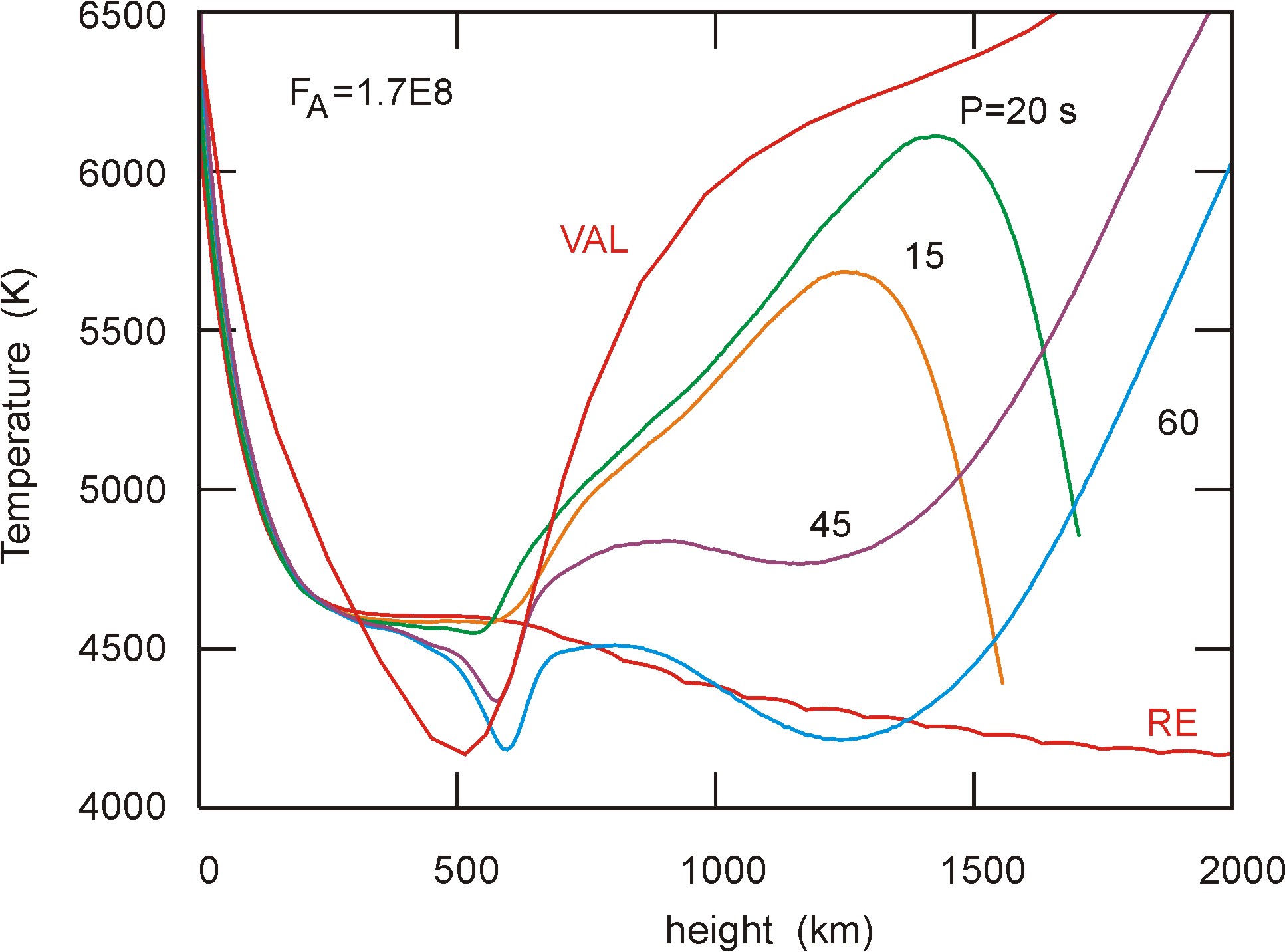
Figure 17 shows three phases of a monochromatic acoustic wave calculation in the solar atmosphere with a period of 20 s. The green phase is nearly one period later than the blue one and the red about 3 periods later than the green phase. This shows by the fact that at low height the three phases are almost identical. Near 1500 km height it is seen that three shocks merge between the blue and the green phases and that this shock merges with another until in the red phase it becomes very strong. The perpetual merging lets the shock grow rapidly in strength (and speed) and produces pronounced adiabatic cooling in the region behind it. This behavior repeats itself and causes the time-averaged temperature to drop at this height as can be seen in Fig. 18.
Below the height of 1500 km the theoretical chromospheric temperature rise in outward direction shows a fair resemblance with the semiempirical atmosphere model by Verazza, Avrett & Loeser (VAL, 1981), which based on the observation of many continua (see Fig. 18) also features an outward chromospheric temperature rise. However, the disparant behavior above that height does not agree with the idea of acoustic heating of chromospheres. It was realized that the excessive numbers of shock mergings are an artifact of the 1D plane-parallel wave propagation and thus are caused by the inadequate use of our 1D mathematical code to simulate the acoustic wave propagation (Ulmschneider et al. 2005). Only in this very special 1D geometry are shocks so precisely aligned with each other that mergings occur between shocks that have shock jump regions with widths of the order of only meters and extend horizontally over hundreds or thousands of km.

Fig. 17 Temperatures of three phases of an acoustic wave calculation in the solar atmosphere. The waves have a period of 20 s and the time of the phases is indicated

Fig. 18 Time-averaged temperatures in the solar atmosphere produced by monochromatic acoustic waves of different periods P but the same energy flux of F_A = 1.7 10^8 erg cm^{-2} s^{-1}. Also shown is the initial radiative equilibrium temperature distribution before the waves started. VAL indicates the semiempirical model by Verazza, Avrett & Loeser (1981)
In realistic situations where acoustic energy comes from extended and multiple sources distributed over the star is it very unlikely that occasional shock encounters will see shocks that are so precisely aligned that they merge. Much more likely is the situation that shock encounters will lead to a harmless crossing of shock fronts that are inclined against one another. Moreover, in a realistic 3D wave calculation the waves would propagate in every direction and we would frequently see shocks moving in non-vertical directions and directions other than the line of sight. Also, a frequent and persistent occurrence of strong shocks is not observed in chromospheres.
For this reason it is unavoidable that serious efforts must be made to go to 3D simulations which, however, must not neglect NLTE and time-dependent ionization effects. For this, massive computer power will be required.

